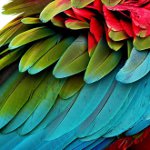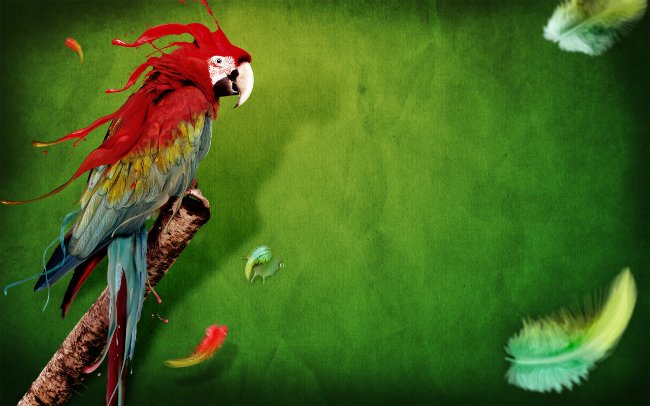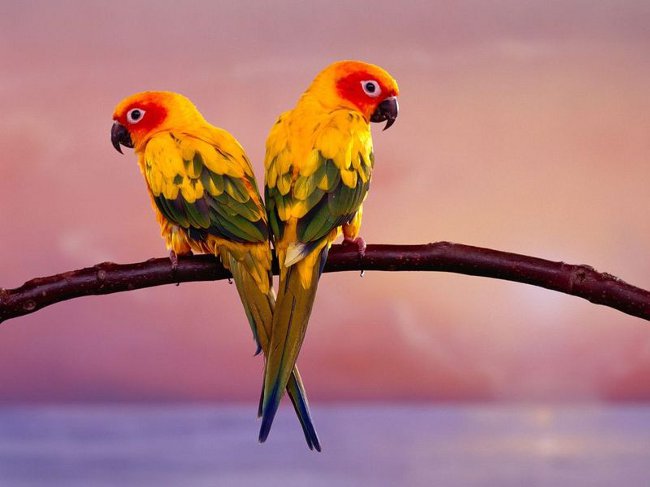Moulting in parrots

Can not only cats and dogs can be shed, but even birds, for example, parrots. Moulting in parrots Is a natural process of changing the plumage. It is not a cause for concern, but during moulting the parrot needs special care.
Moulting in parrots is juvenile and intermittent. Juvenile molt is a molt of young animals, the first change of the feather cover. The time of the first molting depends on the type of parrot and the conditions of detention, but usually it begins at the age of 3-4 months and can last several months. Juvenile molt in parrots is usually quite intense, for some time your pet may look unpresentable, periodically on the body can appear bald patches.
Periodic molting in parrots occurs twice a year and lasts about a month. Normally, the loss of feathers is not very noticeable: first the fluff falls out, then the entire feathering cover is gradually replaced, the flight and tail feathers are the last. The parrot does not lose the ability to fly during molting, because the flight and tail feathers are replaced symmetrically, in pairs, so that the bird can maintain balance.
In general, the mechanism of such a highly organizedprocess, like molting, has not yet been studied to the end, but it is known that moulting in parrots is regulated by the central nervous system and glands of internal secretion. In particular, it is known that stimulates moult hormone thyroxine, which secretes the thyroid gland. So a problem molt can signal a thyroid disease.
During molting, the metabolism of parrots becomes more intense, the body temperature rises. At this time, the bird needs more nutrients, so you need to provide the parrot with a varied diet with vitamin and mineral top dressing.
In the pet store you can buy vitamins for birds that are added to food. It is also necessary to provide the parrot with constant access to mineral sources (mineral stone, organic sand, pounded seashells, sepia, bone meal, egg shell, chalk, crushed shell rock, calcium glycerophosphate).
More parrots in the moult need protein. In nature, parrots during moulting willinglyeat insects, but to catch flies and beetles for them in city conditions is not worth it. It is better to go to a pet store and get a live feed that suits the parrots. It is also fashionable to give a low-fat cottage cheese or a little boiled egg (chicken or quail).
During moulting parrots especially like to swim, so you do not need to deprive them of such an opportunity. At all, During this period, air humidity is very important for the bird. In the cold season, when the apartment air is dry due to heating, you should use an air humidifier or at least put a wet towel on the battery, periodically changing it.
Moulting in parrots is usually quite calm, although sometimes parrots can become restless and irritable. During moulting the parrot is subject to stress, therefore it is necessary to provide him with peace and comfort. A parrot can pluck out old feathers, which cause him too much discomfort, but normally a bird should not be too addicted to plucking.
Many factors influence the course of molting. Incorrect living conditions and an unbalanced diet result in an incorrect lingering moult, at which bare skin areas are observed,and feathers do not grow long. In this case, you need to reduce the light day to eight hours - this will help to stimulate molting. If this does not help, you need to contact the veterinarian.
There is also the so-called shock moult in parrots, this is a consequence of stress. With such a moult, the parrot loses its feathers sharply or in bundles. The recommendations here are the same as for normal moulting. But in addition, we also need to provide the parrot with heating - in case of shock moult, the parrot's body temperature does not rise, and your pet can catch a cold.
But keep in mind that sometimes parrots fall feathers not during moulting, but because of disease or defeat by parasites. Therefore, if the moult is delayed or you see any other alarming symptoms, you need to contact the veterinarian-ornithologist: he will diagnose and prescribe treatment.














